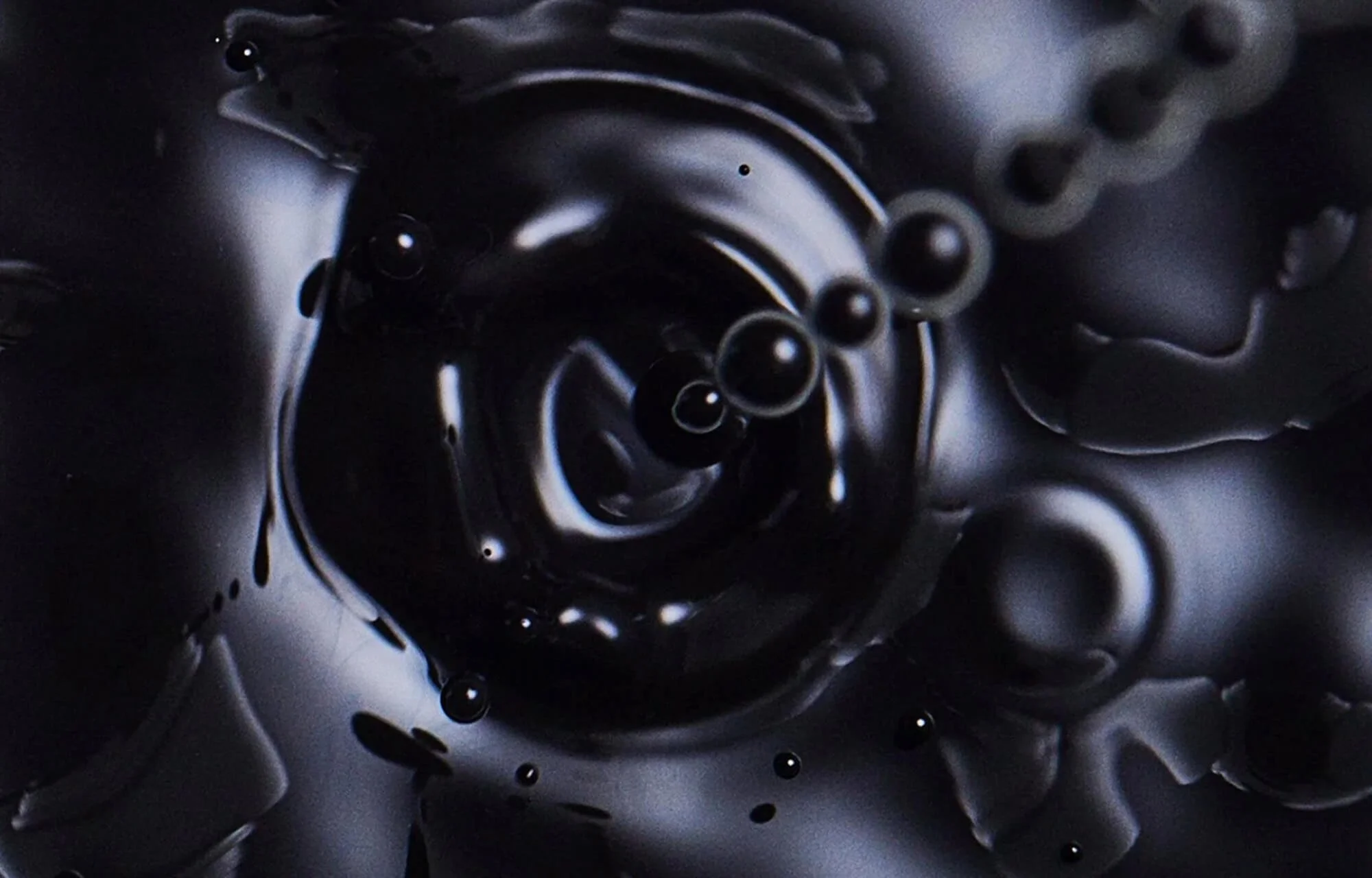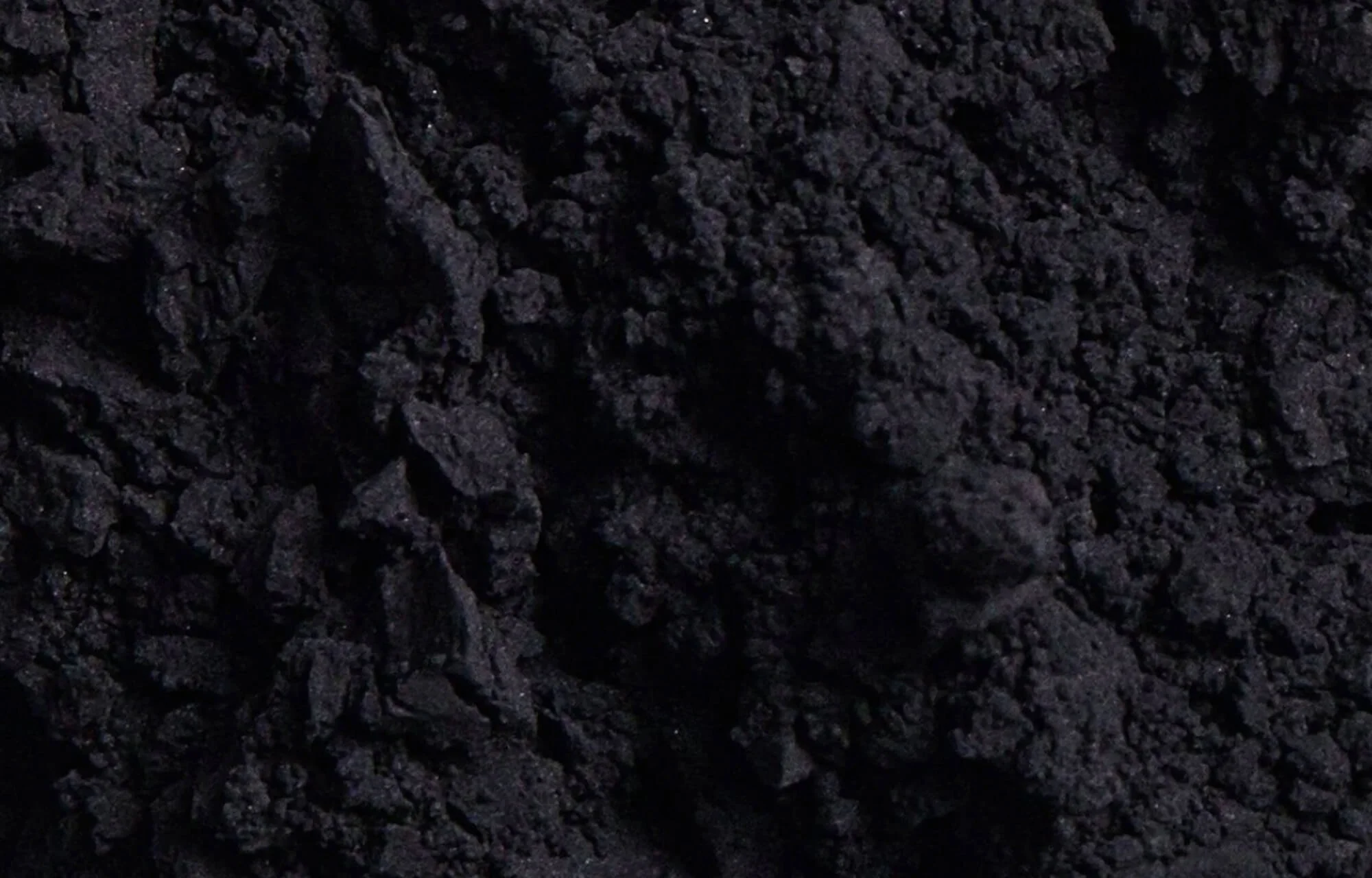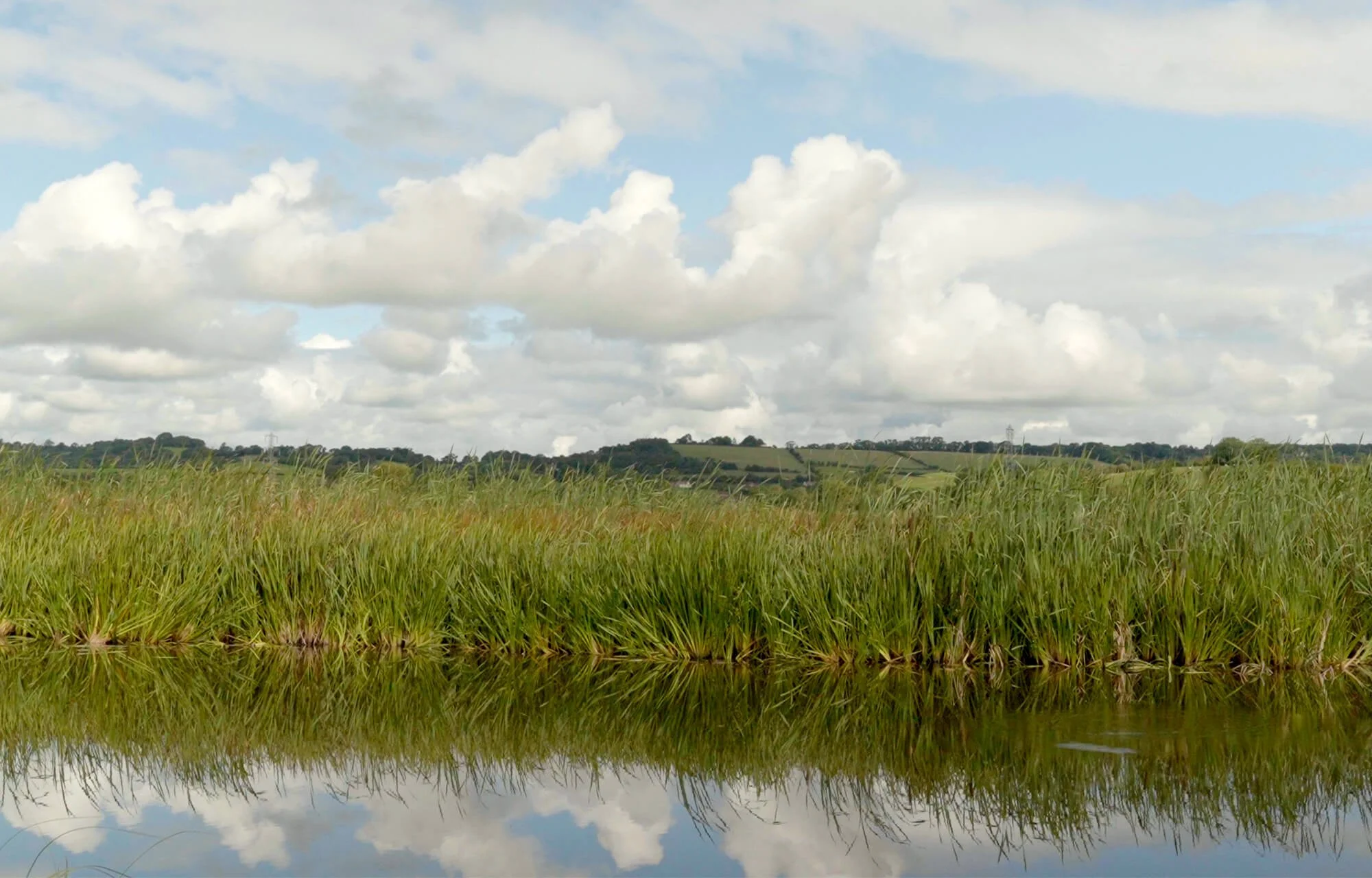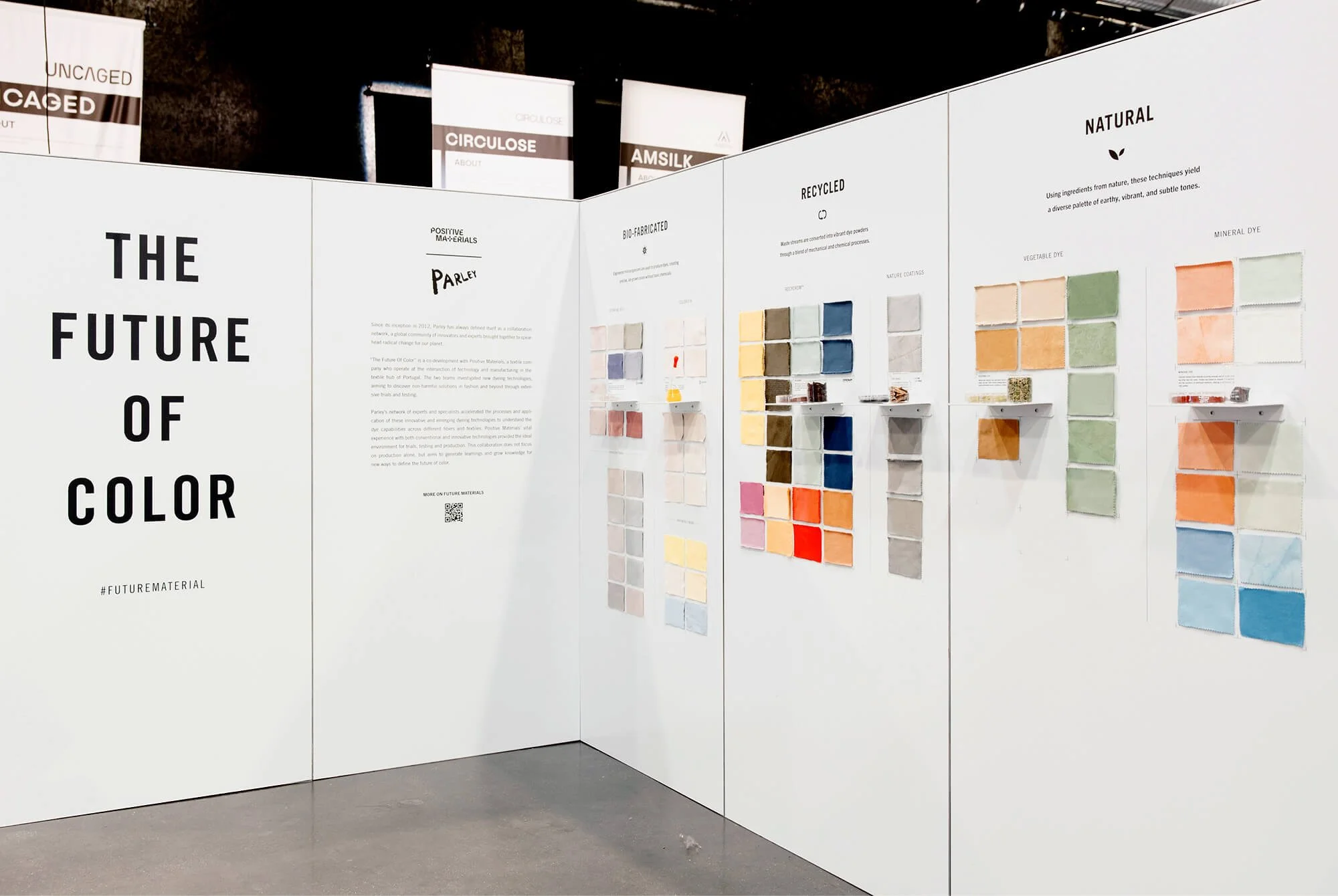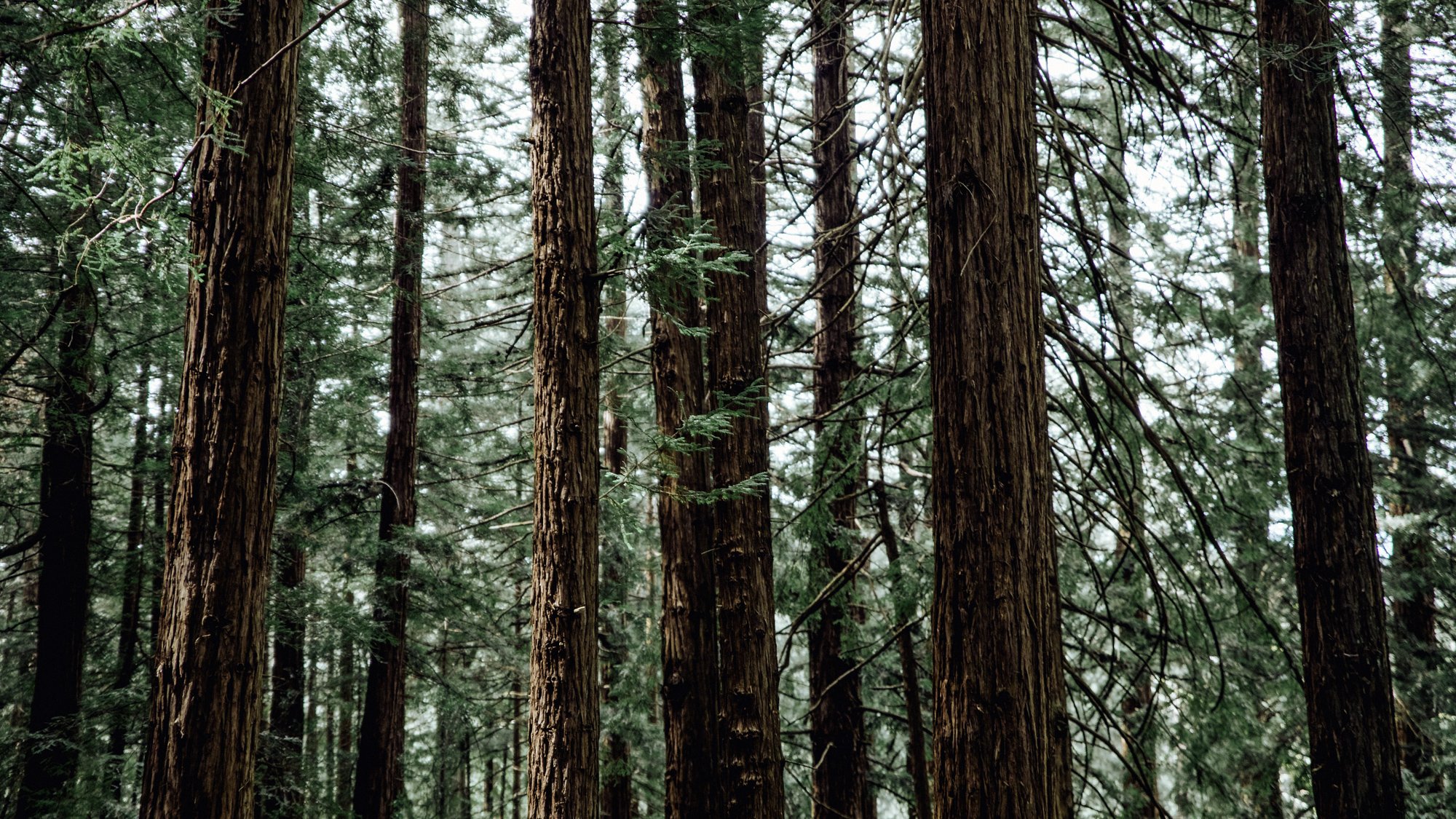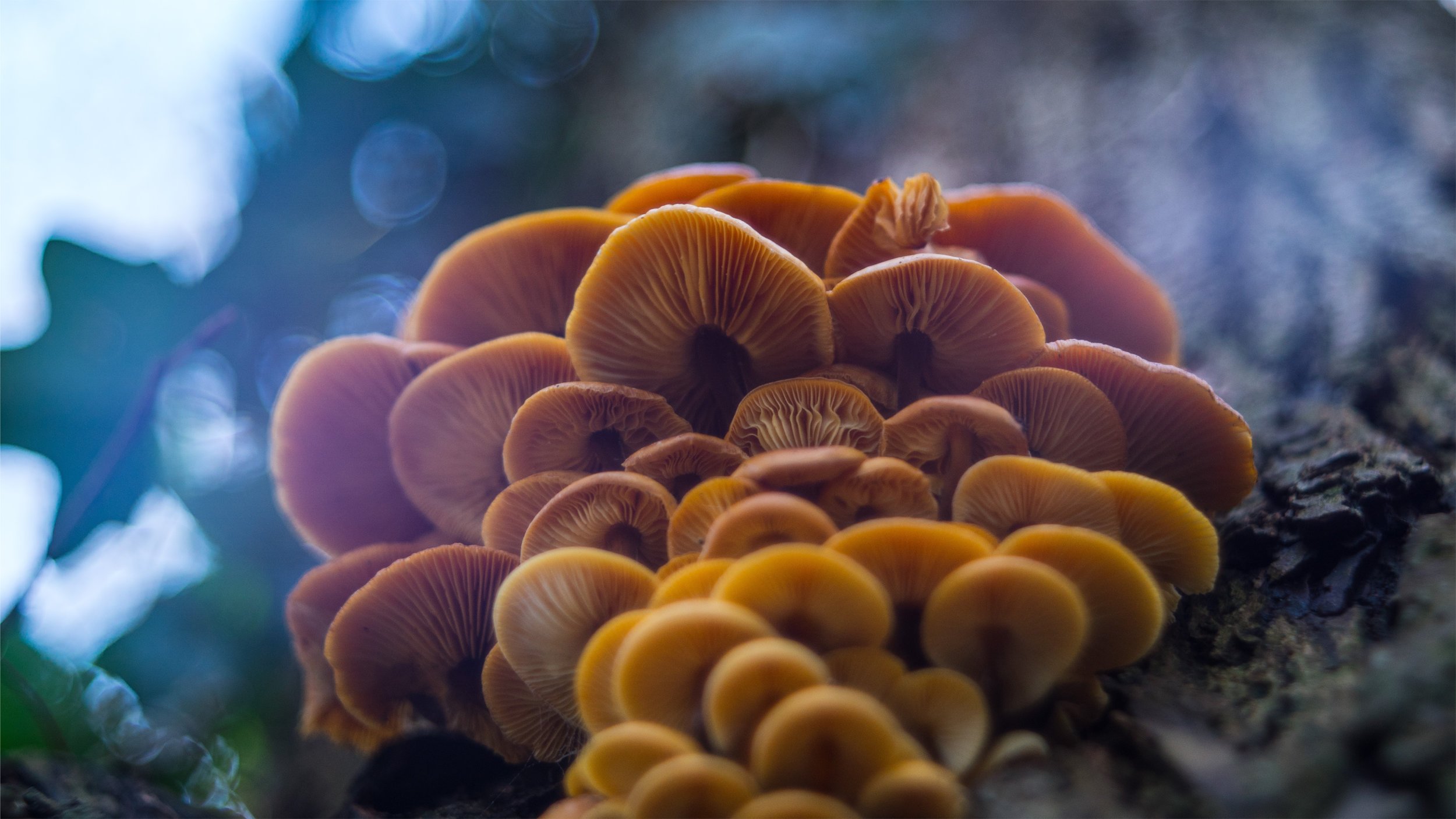How Wood Waste Is Being Used To Make The Color Black Safer
We speak with Jane Palmer about her company Nature Coatings and its mission to replace fossil fuel-based materials in every industry
At Parley, we’re always thinking about the future. What can the world look like? How can it be improved? How can we not just live in harmony with nature, but learn from it? We are aware that we cannot simply recycle our way out of the plastic crisis – we need to redesign the structures and systems that pollute our planet, along with the harmful materials that we’ve become addicted to. It’s why we’re calling for a Material Revolution – we have to change the way we make things in order to create the future. This new Parley series will meet the innovators and scientists who are trying to remodel our material world.
It’s estimated that around 15 million metric tons of carbon black is produced every year, emitting between 29-79 million metric tons of carbon dioxide in the process. It’s an industrial material that’s mostly used in the tire industry but roughly ten percent is used in pigments and makeup products such as mascara, eyeliner and lipstick. As with many household, everyday items that are firmly ingrained in our lives, we may not pause to think about what’s in them, how they’re made, or what their impact on our health might be. However, commercial carbon black contains polycyclic aromatic hydrocarbons (PAHs), which are carcinogenic and have been linked to serious health problems. And yet, millions of people apply this fossil fuel-based material to their faces every day.
Jane Palmer is the founder and CEO of Nature Coatings, an American company that makes a range of bio-based black pigments made from certified wood waste for application across a range of industries. Her aim is to “help every industry they can around the world with a better, safer product” and replace petroleum-based pigments and dispersions. Thus far, they’ve partnered with leading brands such as IKEA and Asahi, and worked with luxury fashion houses like Ferragamo and Balenciaga. Nature Coatings is also a part of the Parley Future Material network, with their pigments used on our capsule collection that we released in 2024 in collaboration with Sky High Farm Universe.
We caught up with Jane to hear about a childhood spent experimenting, her journey so far with Nature Coatings and her determination to scale products that are carbon negative, carcinogen free and offer the same, if not better, standard of performance.
BioBlack — Dispersions
BioBlack — Dry Pigments
BioBlack — Dispersions
BioBlack — Dry Pigments
Q&A
On a basic level, can you tell me about the problem that your company seeks to solve? Why is creating black pigment using conventional methods so toxic and what's the impact that it has on our planet and health?
I've been in pigment and dye for a really long time, over 25 years and mostly in textiles, which is what I studied. I’ve seen the destruction of environments, water systems and land. You may have seen pictures of rivers in Bangladesh that are dark blue or purple, and I just think that’s insane. We can get what we want, say black jeans, without destroying a river, without destroying someone's health. I don't see why we need to be doing it that way.
The deeper I got into understanding the problem, the more I realized, OK, these traditional dyes and pigments are made from petroleum. Fossil fuels are destructive to the environment, but they're also causing real health problems. I've met people with serious health problems from working near pigment and dye places, particularly in India and Southeast Asia. It's so heartbreaking to think somebody over in that area of the world would be getting cancer or some kind of major health problem because I want a pair of black jeans. I'm an empathetic, big hearted person – I know we can do it better. That was the impetus for starting Nature Coatings. I knew that we could not only do it better from a health and environmental perspective, while meeting the same performance level as the more toxic alternative.
At first, people told me that no one's going to adopt something that's higher cost and lower performing, so they'll have to be your first targets – price and performance. What's been great in development is that we're finding that our pigment is higher performing in a lot of different use cases than carbon black because it doesn't fade in the sun and it doesn't change color, so it creates a longer lasting product.
Has the environment always been a passion of yours or is it something that was inspired or sparked by seeing the wrong ways that people were doing things and the wrong structures and methods that were in place?
I've always had a curiosity about what I can do with what's growing in my backyard. I don't think I was thinking about the environment as a kid, but by middle school I was making my own hairspray out of lemon juice, sugar and water!
Did it work?
It worked really well in the winter, but summer was a little iffy. I just always thought, OK, things don't have to be so complicated – what can I use in my kitchen or my backyard? I grew up in the southeast of the US and we have a plant called kudzu. It's a vine that grows a foot a day and it'll take over entire environments. I would go out, chop it down and make paper out of it. I've always had that curiosity.
Before Nature Coatings I owned a dye house in Los Angeles. We were using dyes and pigments that have been used for thousands of years across every culture and every corner of the globe. I was researching medieval recipes from the UK and France and recreating them in our studio, using the same plants, finding the guy in France who would be willing to pick certain flowers for me along the coastline, stuff like that. While those stories and plants were very romantic, and I think there's a really good purpose for them and a lot of different applications, they were not creating the type of scaled impact that I wanted to make. For example, those dyes and pigments fade really quickly in the sun and they’re really expensive, sometimes ten or twenty times the price of fossil fuel-based ones. In LA, you're always in a constant state of drought, not rainfall, and those types of dyes require twice the amount of water to apply. So, at some point it didn't make sense. I wanted to create something global.
“I think that we can get black jeans without destroying a river, without destroying someone's health.”
Jane Palmer — Founder & CEO, Nature Coatings
Sky High Universe x Parley
Levi’s
BioBlack — Beauty
Let’s talk about the process of creating your pigment and how it’s made from wood waste. Why is it important to reuse wood waste in particular?
In development, I worked with dozens of different types of feedstock, food waste, banana peels, coconut shells, grass grain and one particular type of wood waste. One particular kind of wood waste became the winner because we could create something that fit all these parameters of price and performance. I learned that wood waste is a huge problem. I hadn’t thought about it before, but in the US alone, over 50 million tons of wood waste is created every year. We've now partnered with IKEA in a pilot to turn their wood waste (their number one problem) into pigments for their packaging and products. We as a society create so many things with wood, but the waste is usually burned and landfilled. Companies creating wood waste, like lumber companies or paper companies, normally have to pay to get rid of it. We turn that waste into a value product for them.
I also really like wood waste because it's clean, doesn't mold, and it's also abundant and cheap. Currently we are only working with FSC-certified wood waste, which stands for “Forest Stewardship Council”. If you see the FSC logo it means it's coming from a sustainably sourced forest. That was super important for our textile customers because they want full traceability. I remember Balenciaga was our first adopter and they asked if they could come to the forest. They wanted to come and look at the forest. Everybody loves wood products, we all use wood products every day. But we also wanted the traceability and we wanted the certification to know where our wood is coming from because obviously there's deforestation, there's illegal logging, there's a lot of problems within the industry too. If it's not fully traced, we also don't know where it's coming from. Certification is a total pain to be honest, but it's worth it.
We're able to transform that low-to-no-value waste into high-value products. A lot of people think we just burn it and make charcoal, but that's not what we're doing. We use a closed loop system that involves heat – we can capture the steam coming from the water and the wood. We also capture what's called a biogas or a syngas, then use it to power the equipment itself. All the energy is renewable from the manufacturing process. We don't add any chemicals, but we do some additional processing to make it into a usable pigment for various industries.
You've mentioned IKEA and Balenciaga. Is there an industry that you're not yet in that you want to be?
I'm most interested in cosmetics because it relates directly to human health. I've learned a lot about cosmetics, and, unsurprisingly, there are a lot of challenges.
Yeah, take carbon black… people put that on their faces every day.
There's two other huge factors involved. One is that carbon black has nano-sized particles. Nanoparticles can pass through the skin barrier into the bloodstream. Carbon black contains carcinogens. It’s also often coated in forever chemicals (or PFAS) to make them higher performing. That contributes to all the microplastics and forever chemicals in our bodies. It's been around a hundred years of prioritizing profit over people and this is where we've gotten to. I think the exciting thing about today is that consumers are way more aware because information spreads fast. I see a much greater awareness and interest in what other people are doing to make safer and healthier products. So for me, cosmetics are something that's super exciting, but there’s also deodorant, toothpaste, all kinds of stuff we apply to our bodies.
Maybe I'm just close to it, but I see there's such a degree of knowledge now about things like plastic pollution or single-use plastic. It’s become a lifestyle choice in the same way vegetarianism has, people are grossed out by it. Do you think people are really aware of the impact that carbon black has on us? All the things that you touched on there about forever chemicals and nanoparticles, how aware do you think people generally are about that?
Zero. I think that 99.9% of people have never thought about pigment in their lives, let alone what it’s doing to them. It's a bit of an uphill battle, but those who work in the industry know. Chemists, R&D labs in these industries, whether it's textiles, cosmetics, paint, packaging, inks – they all know. What's great about today is that innovation drives profit. A lot of companies look to our products as a way to get ahead of competitors, to offer something new, which is probably the fastest way to affect change. Also, I think the word sustainability has been overused to the point where it has lost its meaning. Whereas new and innovative is more appealing.
“It's been around a hundred years of prioritizing profit over people and this is where we've gotten to.”
Jane Palmer — Founder & CEO, Nature Coatings
What do you hope Nature Coatings will look like in ten years? Where do you want to be in a decade?
That's a great question. There are very large carbon black companies out there and we want to be the “black” version of that. We want to be touching every industry there is and providing a better solution.
How far away do you perceive a world to be in which bio-based materials are the standard rather than something that we talk about as “innovative technology”?
There's a perception that bio-based materials will be lower-performing and more expensive. Once often prove that wrong and show that de-risking supply chains can be profitable. For example, fossil fuel costs are unstable – varying wildly all the time. Our feedstock - wood waste - is consistent. What’s appealing to people about our company is that we make pigments in America, so that already de-risks supply chains. To return to your question about the ten year plan, we have a relatively simple and small manufacturing footprint that's very modularized. In theory we can pick up what we're doing here and replicate it anywhere in the world with a relatively low capital expenditure. So, our goals are to do that both in Europe and Southeast Asia to help every industry we can with a better, safer product.


